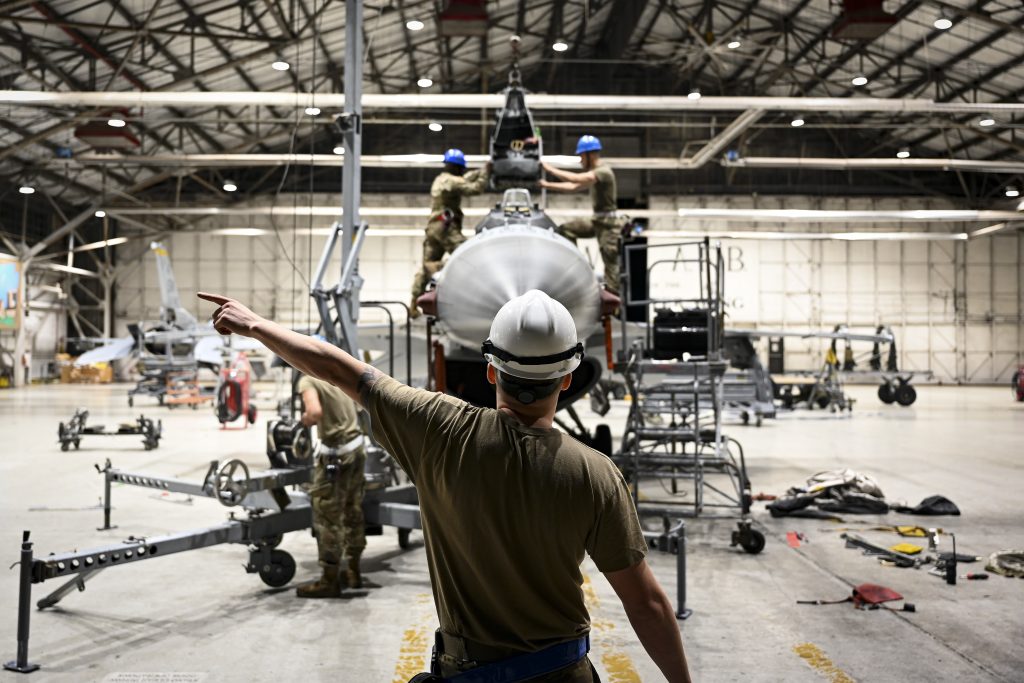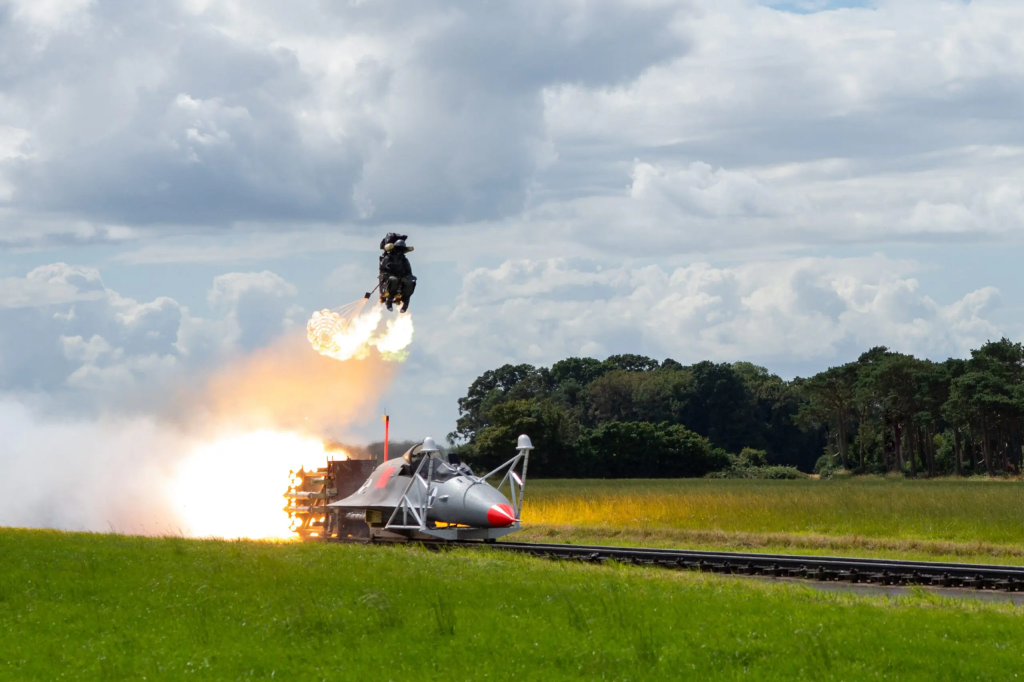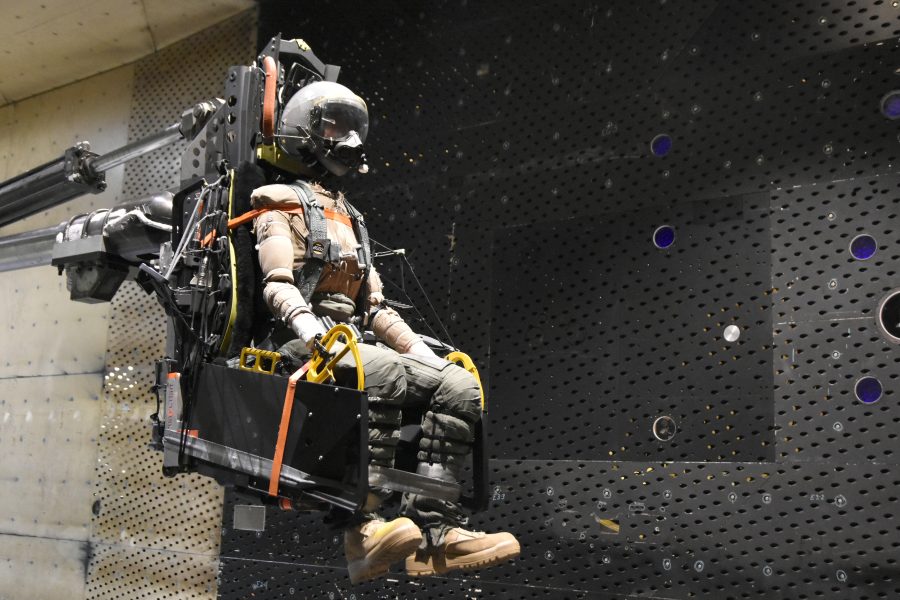Editor’s Note: This story was updated Aug. 30 to include responses from Martin-Baker and the Air Force Life Cycle Management Center.
The Air Force has cracked the door open to a competition for its Next-Generation Ejection Seat, four years after awarding a sole-source contract for the program.
In a “sources sought synopsis” released Aug. 16, the Air Force Life Cycle Management Center announced it wants to “gather additional information on the current state and availability of vendors which can provide an ejection seat that meets Air Force safety and sustainment requirements” for the F-15, F-16, F-22, and B-1.
All four aircraft currently fly with the ACES II ejection seat, built by Collins Aerospace.
The Air Force announcement does not promise a future competition. But it does mark a notable change from October 2019, when the service its sole-source contract award to Collins for the new ACES 5 ejection seat, declaring it was the “only company able to meet the Government’s minimum requirements for the NGES program.”
Collins agreed to a $700 million deal in October 2020, covering ejection seats for all four fighters, plus the A-10. Collins, now a subsidiary of RTX, declined to comment on the Air Force’s search for options. The Air Force Life Cycle Management Center declined to offer a comment.
The need for a new ejection seat is driven by several factors, said Kevin Coyne, founder of “The Ejection Site” and a member of the SAFE Association, an organization focused on safety and life support systems.
ACES II was first developed in the 1970s, Coyne said, and while upgrades and modifications have been incorporated since then, new technology has developed that can reduce injuries and help pilots and aircrew survive the hazards of being hurled from their aircraft in flight—events that can cause all sorts of traumatic injuries. Coyne said maintenance on ACES II seats can be difficult, requiring the removal of the aircraft canopy and extra equipment.

New seats like Collins’s ACES 5 and Martin-Baker’s US18E accommodate both lighter and heavier occupants, and have systems to protect crew members’ heads, necks, arms, and legs. Their designs reduce the need to remove canopies during maintenance.
The Air Force has been eyeing an ACES II replacement for nearly a decade now. The service released a similar “sources sought synopsis” in 2016 for the NGES program and it updated its escape system safety criteria later that year, following up with another “sources sought” synopsis in 2019.
The latest sources sought document has similar requirements for pilot weight, performance at “level flight conditions,” and probability of major injury. But it raises the minimum altitude required for low-level escapes when a fighter aircraft is rolling, pitching, or sinking. That eases the requirement for the manufacturer.
The Air Force received two responses to its 2019 synopsis, before determining that only Collins Aerospace was able to meet its requirements. Martin-Baker is the only other manufacturer to make an ejection seat for an Air Force plane—its seats are on the F-35, the T-6, the T-38, and the A-29. Lockheed Martin also picked its US18E seat to go on its new Block 70 F-16 fighters currently being built for foreign partners.
In response to a query from Air & Space Forces Magazine, Martin-Baker noted that the US18E was chosen by Lockheed and qualified in coordination with the F-16 program office and the Air Force Life Cycle Management Center.

Collins’s ACES 5 ejection has already been selected for the new T-7A Red Hawk trainer, and the requirements resulted in a delay during testing. Air Force officials said that tests showed the escape system exhibited unsafe deceleration at parachute opening, potentially causing pilots to suffer concussions as their visors tore off. At the time, industry sources told Air & Space Forces Magazine that USAF’s crash dummies were improperly instrumented, raising questions about the results. A reassessment of the data showed the seats were compliant, the sources said.
ACES II also faced scrutiny in 2021 when an F-16 pilot’s ejection seat failed to fire during an emergency landing, leading to his death. A subsequent report faulted the seat’s Digital Recovery Sequencer, a component that was being replaced fleet wide at the time of the accident.
Since then, however, several aviators have successfully ejected from aircraft with ACES II seats. An American F-16 pilot ejected over South Korea in May 2023, the 703rd air crew member to safely eject with the seat, Collins Aerospace asserted at the time. In January 2024, all four crew members on a B-1 bomber safely ejected at Ellsworth Air Force Base, S.D., during an emergency landing.
Martin-Baker seats have come under scrutiny at times as well. In July 2022, the Air Force temporarily grounded its F-35s when a defective cartridge was found in one ejection seat. In May, an instructor pilot died in a T-6 trainer when his ejection seat went off while the plane was on the ground, though Martin-Baker said in a statement that “although the Accident Investigation Board is not complete, the ejection seat in this accident was not implicated in the accident.”
Martin-Baker also noted that its seats have had “7,728 successful ejections, of which 3,601 are U.S. aircrew. The F-35 US16E ejection seat has saved nine pilots since the aircraft was fielded.”
Martin-Baker will respond to the sources-sought synopsis.
